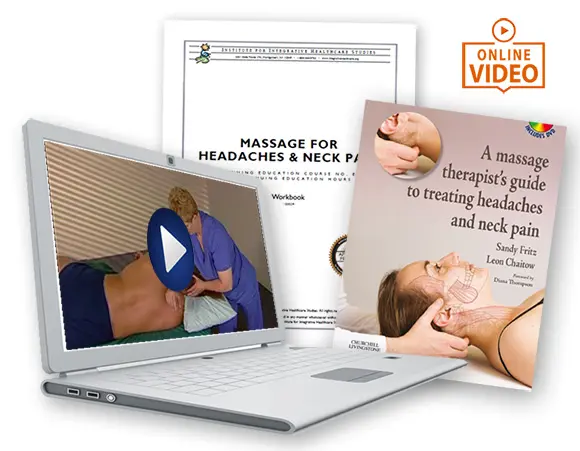
Headaches and neck pain are both extremely common and nearly everyone has had this type of pain on occasion. In some cases the pain is more frequent and debilitating. Through this continuing education course, discover how you can assist clients in alleviating frequent headaches and neck pain.
Through online text and video, authors Sandy Fritz and Leon Chaitow will:
Angela Williamson, LMT
3/24/2025
Kathryne Salter, LMT
3/18/2025
Benjamin van Leeuwen, LMT
3/13/2025
Holly Love, LMT
3/12/2025
Alishia McCoy, LMT
3/11/2025

Lydia Riedell, LMT is a licensed massage therapy professional trained at the Core Institute in Tallahassee and licensed in Florida since 1992. In concert with her practice of massage therapy, Lydia became a Reiki practitioner in the Usui System of Natural Healing and applied this energy based healing art as a volunteer with Big Bend Hospice and as a first responder with the Lake Lamonia Volunteer Fire Department. After becoming a Reiki Master in the Usui System, Lydia opened a massage establishment where she specialized in massage therapy for patients with TMJ, fibromyalgia, and sports injuries. Lydia practices Acutonics Sound Healing with tuning forks and crystals and teaches Qigong fundamentals and Light Balancing techniques for health and vitality.
Ms. Riedell is the instructor on many Instutute massage CE courses, including The Impact of Fibromyalgia, Infectious Disease: Hepatitis, Massage for Headaches & Neck Pain, Massage for Lower Back & Pelvic Pain, and many more.


Take our free online course: Ethics Refresher
We will not rent/sell your email to anyone.
You'll also receive our newsletter and special offers.
Thank you! An email will be sent to the address provided with instructions on how to enroll in this 1 CE hour course - FREE!
If you do not see our email within a few minutes of signing up, please check your Spam/Junk folders it may have been delivered there instead of your inbox.
If, by chance, you still have not received it within 5 minutes, please call us at 1-800-364-5722, Monday-Friday, between 9am-12:30pm and 1:30pm-5pm EST for assistance.